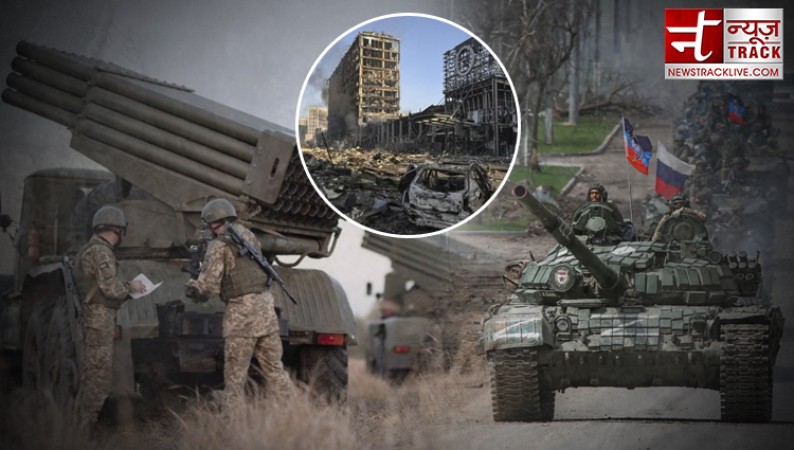
New Delhi: The Russian-Ukrainian War, which began in February 2014, is an international conflict involving Russia as well as separatists supported by Russia.
Russia annexed Crimea from Ukraine after the Revolution for Dignity and aided pro-Russian separatists fighting Ukrainian forces in the Donbass War.
In addition, there were naval incidents, cyber attacks, and heightened political tensions during the first eight years of the conflict. The conflict escalated significantly in February 2022 when Russia launched a large-scale invasion of Ukraine.
Also Read: Russian legislation restricts the use of foreign words
The Euromaidan demonstrations in early 2014 coincided with the Revolution of Dignity and the overthrow of Viktor Yanukovych, the pro-Russian leader of Ukraine.
Pro-Russian unrest soon broke out in eastern and southern Ukraine. Unmarked Russian troops entered Crimea, Ukraine, at the same time taking control of key locations and infrastructure. Shortly after a heated referendum, Russia annexed Crimea.
The Donbass War began in April 2014 when armed pro-Russian separatists took control of government buildings in the Donbass region of eastern Ukraine and declared the Donetsk People's Republic (DPR) and Luhansk People's Republic (LPR) as independent states.
Russian support for the separatists was significant but covert, and efforts by the Ukrainian government to completely retake separatist-held territory were unsuccessful. Russian troops took part in the conflict, despite the country's denial of involvement.
The Minsk II accords were signed by Russia and Ukraine in February 2015 in an attempt to end the conflict, but were not fully implemented in the following years.
With several fleeting ceasefires but no lasting peace and few changes in regional control, the Donbas war has turned into a violent but stable conflict between Ukrainian and Russian proxies.
Starting in 2021, Russia increased its military presence along its border with Ukraine, including from inside neighboring Belarus. Plans to attack Ukraine were repeatedly denied by Russian officials.
Also Read: US State Department announced that it had stopped funding the Global Disinformation Index
Russian President Vladimir Putin criticized the expansion of NATO and demanded that Ukraine be barred from ever joining the military alliance. Additionally, he disseminated illogical views and questioned the existence of the legitimacy of Ukraine.
In February 2022, Russia recognized the DPR and LPR as independent states. Putin then declared a "special military operation" in Ukraine and invaded the region.
The invasion was condemned globally, and several countries imposed new sanctions against Russia and tightened pre-existing ones. In the face of fierce resistance, Russia abandoned the attempt to seize Kiev in early April 2022.
Due to effective counter-offensives, Ukrainian forces began to retake territory in the northeast and south from August. Russia annexed four partially occupied regions in southern and eastern Ukraine in late September, a move that went unnoticed by the rest of the world. Tens of thousands of people have died as a result of the ongoing civil war, which has also created a huge refugee crisis.
On the morning of February 24, 2022, Putin announced the launch of a "special military operation" to "demilitarize and discredit" Ukraine. Shortly thereafter, missiles and airstrikes hit Kiev and other cities throughout Ukraine.
This was quickly followed by a massive ground offensive on several fronts. All male Ukrainian citizens between the ages of 18 and 60 were mobilized under martial law, and all of them were prohibited from leaving the country.
Initially, Russian attacks were launched on four fronts: a southern front from Crimea; South-Eastern Front from Luhansk and Donetsk; a northern front from Belarus towards Kiev; A north-eastern front towards Kharkiv.
Also Read: Biden: In response to Russia suspending the nuclear treaty
Russia's advance on the northern front stalled in March, and by April, its troops were in retreat due to significant casualties and fierce Ukrainian resistance around Kiev.
On 8 April, General Aleksandr Dvornikov assumed command of Russia's forces in southern and eastern Ukraine, and some units evacuated from the north were transferred to Donbass.